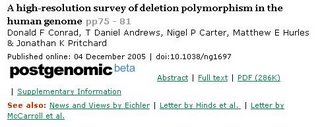What is a blog carnival ? In my opinion a blog carnival is just a meta-blog, a link aggregation supervised by an editor. They have been around for some time and there are already some rules to what usually is common to expect from a blog carnival. You can read this nice post on Science and Politics to get a better understanding of blog carnivals.
Here is a short summary I found on this FAQ:
Blog Carnivals typically collect together links pointing to blog articles on a particular topic. A Blog Carnival is like a magazine. It has a title, a topic, editors, contributors, and an audience. Editions of the carnival typically come out on a regular basis (e.g. every monday, or on the first of the month). Each edition is a special blog article that consists of links to all the contributions that have been submitted, often with the editors opinions or remarks.
There are of course science carnivals and I would say that their numbers are increasing with more people joining the science blogosphere. To my knowledge (please correct me :) the first scientific blog carnival was the Tangled Bank that I think started on the 21st of April 2004 and is still up and running.
These carnivals could also be seen as a path of certification (as discussed in the previous post). The rotating editor reviews submissions and bundles some of them together. This should guaranty that the carnival has the best of what has been posted on the subject in the recent past. The authors gain the attention of anyone interested in the carnival and the readers get supposably good quality posts on the subject. With time, and if there are more blog posts than carnivals we will likely see some carnivals gaining reputation.
Maybe one day having one of your discovery posts appear in one of the carnivals will be the equivalent of today having a paper published in a top journal.
With that said, why don't we start a computational biology/bioinformatics carnival ? :) There might not be enough people for it but we can make it monthly or something like this. Any suggestion for a name ?
Tags:








